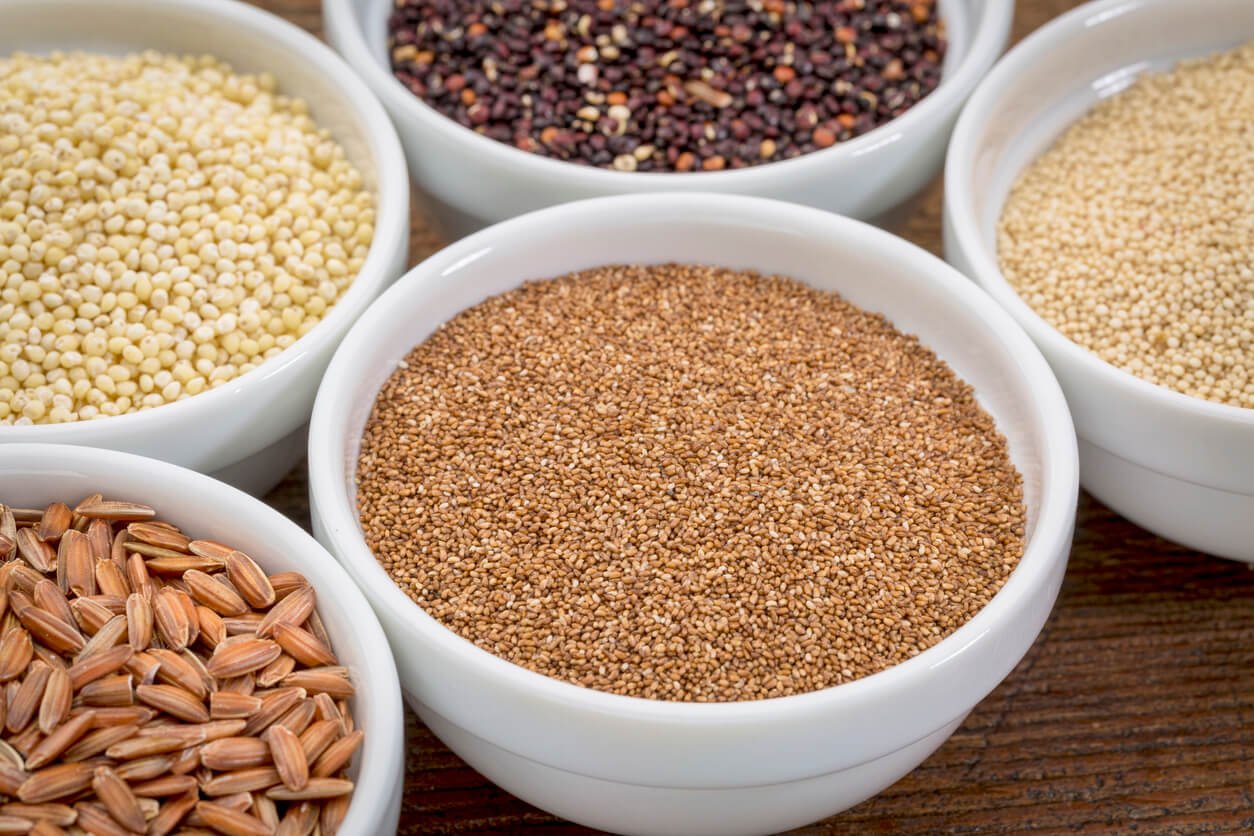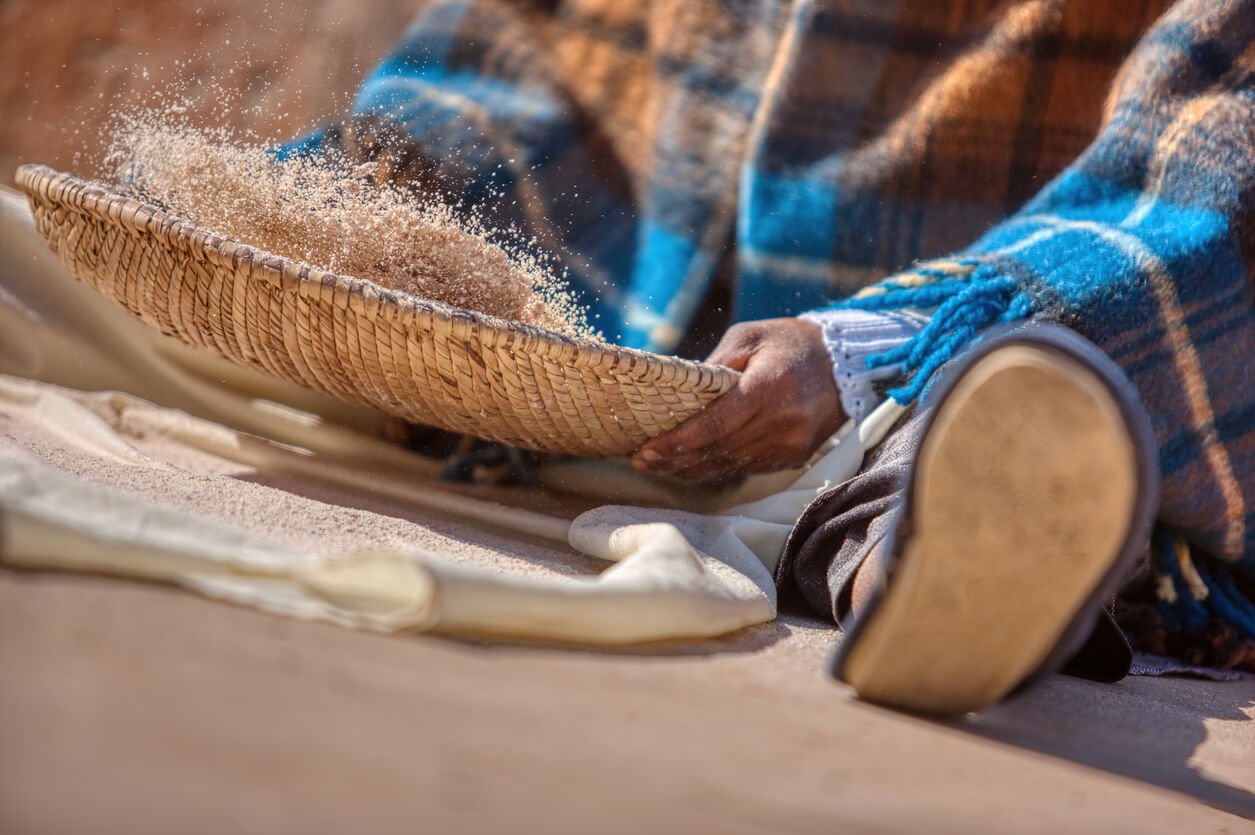Teff is an incredibly important crop that’s native to Ethiopia. It’s the only
fully-domesticated plant of the genus Eragrostis (lovegrass). Because of its poppy-sized seeds, teff often falls under the “small millet” category of grains, which refers to small-seeded grasses that serve as staple crops around the world. The name “teff” may have originated from the word meaning “lost” in the Amharic language because the grains are so tiny — as in “I dropped it, and I will never find it again.” How tiny? Picture a quinoa grain, then shrink it to half its size. Then shrink it some more. Now you’ve got teff.Like other millets (actually, there’s fierce debate in certain agronomic circles about whether teff is a true millet or not; I choose not to take sides), teff is a type of cereal grain and not a pseudocereal (other seed that’s used like a grain) like quinoa or buckwheat. One of the main differences is that in teff and other cereal grains, starch granules are stored in the endosperm. In pseudocereals, on the other hand, the starch granules are stored in what’s referred to as the perisperm.
Like quinoa, teff comes in a range of colors, from dark reddish-brown to yellow-brown and even ivory. When eaten in Ethiopia, the white or ivory colors are more highly valued, so they’re often served to important guests as a sign of wealth. Inhabitants of the poorer rural areas typically eat the less expensive, darker-colored teff varieties.
Because teff grains are so small, there are only a couple of practical ways to prepare them: either left in their whole form or ground into a whole-grain flour. Since bran and germ make up such a large percentage of the grain, it’s all but impossible to create “white teff” by removing them (as is done with white rice and white wheat flour). However you eat them, teff grains offer a mild, nutty flavor. Some people say they can taste undertones of cocoa in the darker varieties (I sense a huge marketing opportunity).
Teff Nutrition

One of the biggest reasons you might consider adding teff to your repertoire of whole grains is its nutritional profile.
Like quinoa, teff is rich in protein and amino acids. It’s a good source of antioxidants as well as vitamins A and C and B vitamins like niacin. You’ll also get an array of minerals from teff, including copper and manganese. Compared to many other grains, teff is even a great source of calcium. A serving of cooked teff can contain nearly five times the amount of calcium as a same-sized serving of cooked oatmeal, for instance.
Teff is also a rich source of fiber, and 20–40% of the carbohydrate content of teff is resistant starch, which benefits digestive health. Teff is also relatively high in protein, so it can be especially helpful for plant-based eaters who must avoid gluten, nuts, and legumes.
You’ll find the following nutrients in a three-fourths cup serving of cooked teff:
- 6.5 grams of protein
- 4 grams of fiber
- 13% of the Daily Value (DV) for thiamin
- 12% DV for vitamin B6
- 21% DV for iron
- 22% DV for magnesium
- 12% DV for zinc
- 223% DV for manganese
A Gluten-Free Grain
Because teff is naturally gluten-free, it often appears in the preparation of gluten-free foods and recipes.
Calcium, magnesium, and iron are minerals that are often deficient in processed gluten-free products. Since teff has high levels of these minerals, plus others, it can be a great addition to gluten-free diets. Teff also retains its high fiber content even when processed into flour. One ounce of teff flour contains around five grams of fiber, whereas the same amount of all-purpose (white) wheat flour only has one gram.
Teff is a highly valued grain for people with celiac disease, as well as anyone wishing to eat gluten-free either out of preference or an intolerance. And especially in places where hunger and malnutrition are a problem, teff can be a life-saving solution, providing a rich source of vitamins, minerals, and protein.
Teff’s Importance to Ethiopia and Eritrea

Teff is an ancient grain, like farro, quinoa, spelt, amaranth, and millet. By ancient, I mean that the modern varieties of these crops are genetically very similar to those grown thousands of years ago. Teff is native to Ethiopia and may have originated sometime around 4000–1000 B.C.E. Ethiopia is now home to nearly 4,000 varieties (or cultivars) of teff.
In Ethiopian cuisine, teff commonly gets used in traditional foods and beverages. Some of these include porridge, traditional alcoholic drinks like tella and katikala, and injera (a thin, fermented, pancake-like bread often served with a spiced stew made with meat or pulses, called “wot”).
Teff plays a vital role in food security, nutrition, and income generation for smallholder farmers in Ethiopia. Many Ethiopians and Eritreans (residents of Eritrea, the country just north of Ethiopia) eat it every day — sometimes three times a day — in almost all regions and tribes. The Whole Grains Council estimates that Ethiopians get about two-thirds of their dietary protein from teff.
Economically, the teff crop is a source of livelihood for nearly 43% of all the country’s farmers, most of whom are economically poor.
Teff is also an important source of nutrition for East African athletes. In particular, injera is a major source of energy for elite Ethiopian distance runners. It’s widely believed that the iron in teff may help offset iron losses that can occur from the fragility of hemoglobin-carrying red blood cells that’s common among these athletes. Elite athletes often regard teff as a “super-grain” because of its high mineral content.






Комментариев нет:
Отправить комментарий